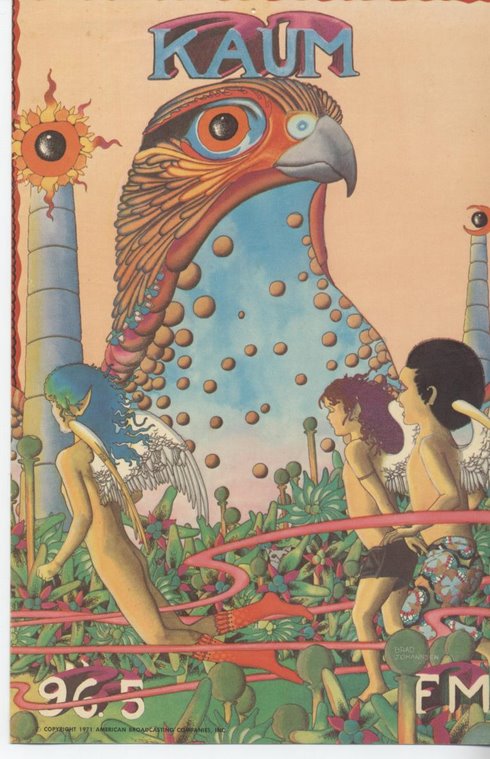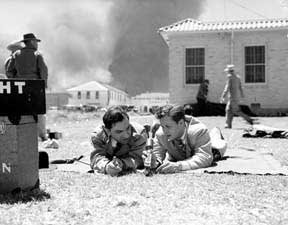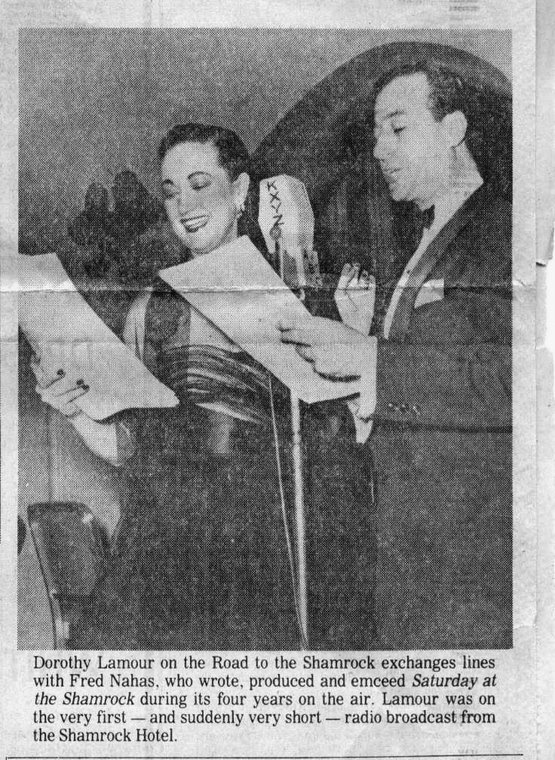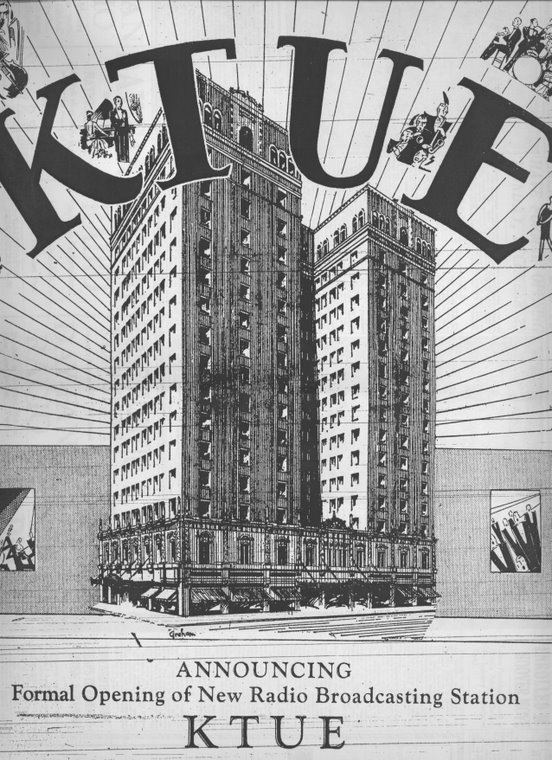KATL and the Press
The Press had been one of the applicants for a station on 1230 kc before the War and was one of the parties notified when the FCC reopened the license hearing on the petition of Roy Hofheinz in 1944, but the Press’ representative was off to the War and didn’t receive the notice until several months later. After getting on the air, Hofheinz formed a close working relationship with the Press and his new station apparently; he did the lion’s share of his advertising for KTHT in the Press and the paper covered station activities much more closely than it reported on the doings of the other stations in town - of course, both the Chronicle and the Post had their own broadcast outlets in KTRH and KPRC. News of KTHT activities, including the use of the first wire recorder, the GI house project, extended coverage of election returns, the cruising radio studio, KTHT-FM and others were frequently the topics of front page stories, or, if not warranting that much coverage, usually would be above the fold on page 2.
KATL had signed on just after the disastrous explosion at Texas City in 1947 when all the Houston stations distinguished themselves with their coverage, and by late that year had formed its own close working relationship that would give the Press a very large voice on the Houston radio dial and deepen KATL’s coverage of the news.
The KATL - Press agreement was headlined center page on page one on December 2, 1947, heralded as a public service of the two entities. 'See it in the Press, Hear it on KATL' was the catchphrase. ‘Press Time’ was to be broadcast 5 times daily, 3 times on Saturdays and twice on Sundays, live from the Press building at Chartres and Rusk. It would feature freshly gathered news, on-the-scene broadcasts with coverage by both KATL and the Press, ‘flavorsome’ special broadcasts, covering as many interests as the Press did itself, and special sponsorship of certain events such as a spelling bee, election returns, etc. It was described as a public service effort strictly, not for business purposes.
The broadcasts would be 10 to 15 minutes in length except for one scheduled on weekdays from 2:30 to 3pm (the Press was an afternoon paper) which would involve foreign correspondents, Washington reporters, comic strip artists, experts in fashion and cooking, chit-chat with entertainers and more. Saturday programs would be for ‘the kids.’ Sports Editor Clark Nealon, who later went on to be Sports Editor of the Post, would also contribute as would the Press’ popular columnists, Carl Victor Little, Andy Anderson, the Press’ Rambler, and The Stroller, Sigman Byrd.
A lavish reception was held at the Rice Hotel for both staffs to get acquainted and reported on also in the Press.
KATL for its part produced a brochure about the new alliance and blog reader Andrew Brown has shared some images from that brochure which show the announcers and engineers of KATL as well as some glimpses of equipment and the Press setup. I’m very grateful to Andrew for sharing this material.





I have a couple of captures of my own from the newspaper article which I will get around to uploading but they are not nearly as good as these.










3 comments:
Top notch radio stuff, Bruce. Thank you for sharing.I am enjoying your site very much.
My grandfathe was Ed Martin. I was very excited to find the picture of him. I have some photos from the radio days, including the building of KATL.
Aunt Cole I would love to see those pictures, as would my readers I'm sure. If there's any way you can scan them and email them to me (not in a PDF file, please, I can't work with those) or if you've got them up on your blog where I can direct my readers to them. Thanks for the comment.
Post a Comment